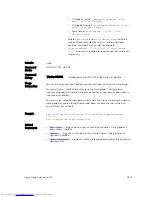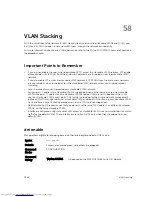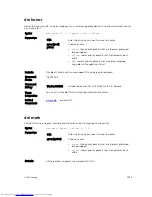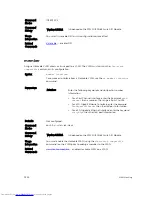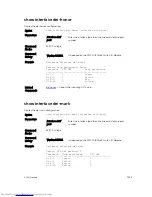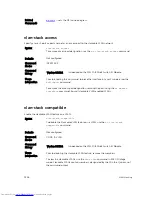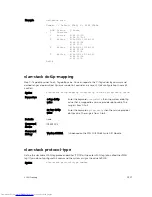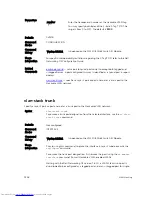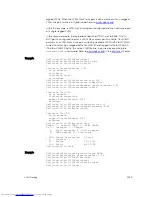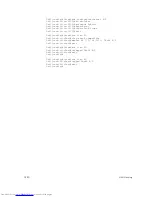
58
VLAN Stacking
With the virtual local area network (VLAN)-stacking feature (also called stackable VLANs and QinQ), you
can “stack” VLANs into one tunnel and switch them through the network transparently.
For more information about basic VLAN commands, refer to the
Virtual LAN (VLAN) Commands
section in
the
Layer 2
chapter.
Important Points to Remember
• If you do not enable the spanning tree protocol (STP) across the stackable VLAN network, STP bridge
protocol data units (BPDUs) from the customer’s networks are tunneled across the stackable VLAN
network.
• If you do enable STP across the stackable VLAN network, STP BPDUs from the customer’s networks
are consumed and not tunneled across the stackable VLAN network unless you enable protocol
tunneling.
• Layer 3 protocols are not supported on a stackable VLAN network.
• Assigning an IP address to a stackable VLAN is supported when all the members are only stackable
VLAN trunk ports. IP addresses on a stackable VLAN-enabled VLAN are not supported if the VLAN
contains stackable VLAN access ports. This facility is provided for the simple network management
protocol (SNMP) management over a stackable VLAN-enabled VLAN containing only stackable VLAN
trunk interfaces. Layer 3 routing protocols on such a VLAN are not supported.
• Dell Networking OS recommends that you do not use the same MAC address, on different customer
VLANs, on the same stackable VLAN.
• Interfaces configured using stackable VLAN access or stackable VLAN trunk commands do not switch
traffic for the default VLAN. These interfaces are switch traffic only when they are added to a non-
default VLAN.
dei enable
Make packets eligible for dropping based on their drop eligible indicator (DEI) value.
Syntax
dei enable
Defaults
Packets are colored green; no packets are dropped.
Command
Modes
CONFIGURATION
Command
History
Version 8.3.16.1
Introduced on the MXL 10/40GbE Switch IO Module.
1322
VLAN Stacking














